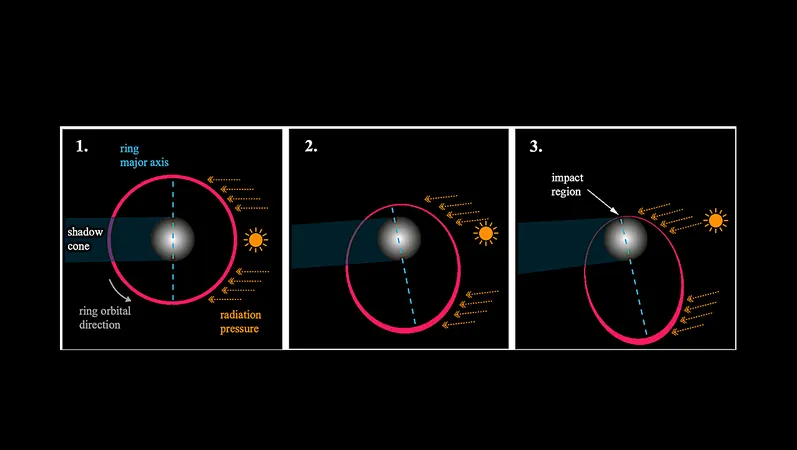
Stunning Discovery: Infrared Excess on Dwarf Planet Makemake Reveals Ongoing Activity!
2024-10-31
Author: Daniel
Introduction
In an exciting breakthrough for planetary science, astronomers have identified a significant mid-infrared excess signal (18-25 µm) emanating from the trans-Neptunian dwarf planet (136472) Makemake. This remarkable finding, made possible by the Mid-Infrared Instrument (MIRI) aboard the James Webb Space Telescope (JWST), indicates that Makemake is more dynamic than previously assumed.
Surprising Temperature Measurements
The observed temperature of approximately 150 Kelvin is surprising, as it far exceeds the levels anticipated based solely on solar heating at Makemake's distance from the Sun. This anomaly raises intriguing possibilities about the dwarf planet's surface and internal processes.
Competing Theories
Researchers propose two compelling theories to explain this unexpected activity. The first suggests that there may be a small (<1%) active region on Makemake's surface, potentially linked to subsurface processes like cryovolcanism—where icy materials erupt instead of molten rock. This possibility would mark a significant departure from our understanding of the relatively static nature of such distant bodies in the Kuiper Belt.
Alternatively, scientists are considering the existence of a previously undetected ring system composed of tiny carbonaceous dust particles. Such rings have never been confirmed around trans-Neptunian objects or Centaurs, making this discovery even more revolutionary. This scenario could offer profound insights into the formation and evolution of not only Makemake but also other similar celestial bodies in the outer solar system.
Implications for Understanding Makemake
Both hypotheses suggest that Makemake is not just a simple relic from the early solar system but a complex object with ongoing geological or physical processes. This revelation could reshape our understanding of the characteristics and evolution of trans-Neptunian objects.
Conclusion
The findings are set to be published in The Astrophysical Journal Letters, contributing to the vast body of astrophysical knowledge that seeks to illuminate the mysteries of our cosmic neighborhood. Keep your eyes on the skies; the universe is full of surprises waiting to be uncovered!

 Brasil (PT)
Brasil (PT)
 Canada (EN)
Canada (EN)
 Chile (ES)
Chile (ES)
 España (ES)
España (ES)
 France (FR)
France (FR)
 Hong Kong (EN)
Hong Kong (EN)
 Italia (IT)
Italia (IT)
 日本 (JA)
日本 (JA)
 Magyarország (HU)
Magyarország (HU)
 Norge (NO)
Norge (NO)
 Polska (PL)
Polska (PL)
 Schweiz (DE)
Schweiz (DE)
 Singapore (EN)
Singapore (EN)
 Sverige (SV)
Sverige (SV)
 Suomi (FI)
Suomi (FI)
 Türkiye (TR)
Türkiye (TR)